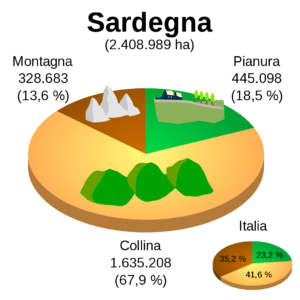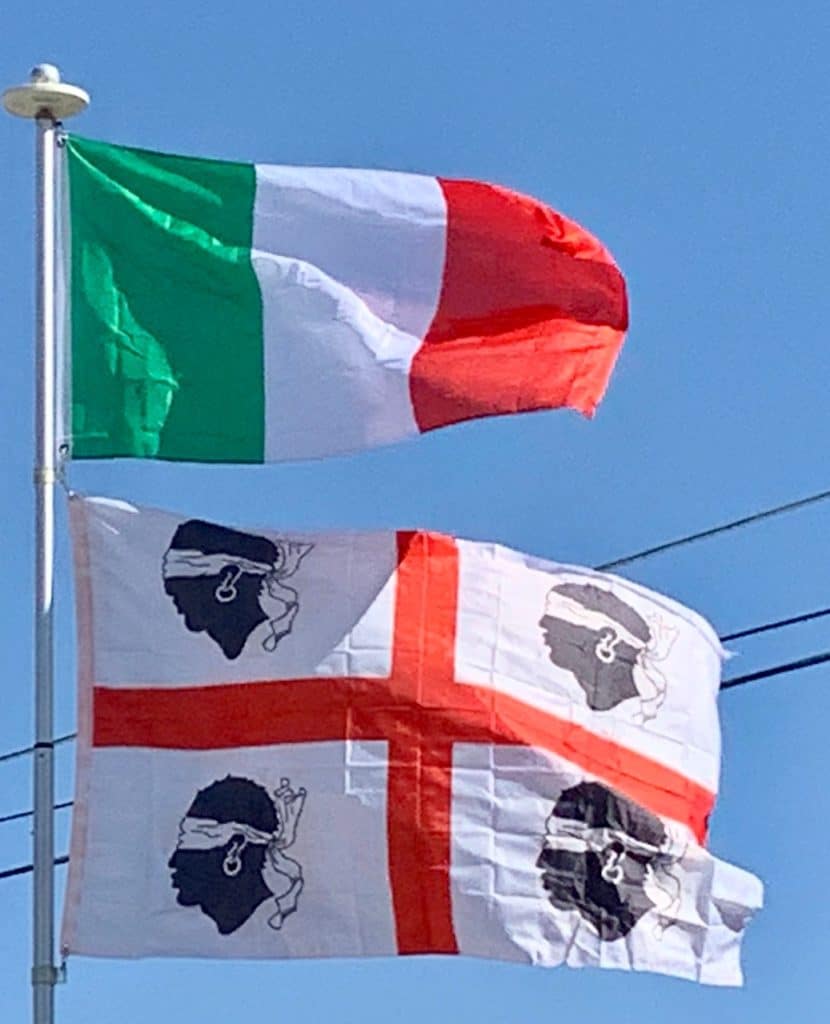The island has an ancient geoformation and, unlike Sicily and mainland Italy, is not earthquake-prone. Its rocks date in fact from the Paleozoic Era (up to 500 million years old). Due to long erosion processes, the island’s highlands, formed of granite, schist, trachyte, basalt (called jaras or gollei), sandstone and dolomite limestone (called tonneri or “heels”), average at between 300 to 1,000 m (984 to 3,281 ft). The highest peak is Punta La Marmora (Perdas Carpìas in Sardinian language) (1,834 m (6,017 ft)), part of the Gennargentu Ranges in the center of the island. Other mountain chains are Monte Limbara (1,362 m (4,469 ft)) in the northeast, the Chain of Marghine and Goceano (1,259 m (4,131 ft)) running crosswise for 40 km (25 mi) towards the north, the Monte Albo (1,057 m (3,468 ft)), the Sette Fratelli Range in the southeast, and the Sulcis Mountains and the Monte Linas (1,236 m (4,055 ft)). The island’s ranges and plateaus are separated by wide alluvial valleys and flatlands, the main ones being the Campidano in the southwest between Oristano and Cagliari and the Nurra in the northwest.

Sardinia has few major rivers, the largest being the Tirso, 151 km (94 mi) long, which flows into the Sea of Sardinia, the Coghinas (115 km (71 mi)) and the Flumendosa (127 km (79 mi)). There are 54 artificial lakes and dams that supply water and electricity. The main ones are Lake Omodeo and Lake Coghinas. The only natural freshwater lake is Lago di Baratz. A number of large, shallow, salt-water lagoons and pools are located along the coastline.
Economy:
Sardinia’s economy is in the best position among Italian regions located south of Rome. The greatest economic development had taken place inland, in the provinces of Cagliari and Sassari, characterized by a certain amount of enterprise. According to Eurostat, the 2014 nominal GDP was €33,356 million, €33,085 million in purchasing power parity, resulting in a GDP per capita of €19,900, which is 72% of the EU average. The per capita income in Sardinia is the highest of the southern half of Italy. The most populated provincial chief towns have higher incomes: in Cagliari the income per capita is €27,545, in Sassari €24,006, in Oristano €23,887, in Nuoro is €23,316 and in Olbia is €20,827.
The Sardinian economy is, however, constrained due to the high costs of the transportation of goods and electricity, which is twice that of the continental Italian regions, and triple that of the EU average. Sardinia is the only Italian region that produces a surplus of electricity, and exports electricity to Corsica and the Italian mainland: in 2009, the new submarine power cable Sapei entered into operation. It links the Fiume Santo Power Station, in Sardinia, to the converter stations in Latina, in the Italian peninsula. The SACOI is another submarine power cable that links Sardinia to Italy, crossing Corsica, from 1965. Small scale LNG terminals and a 404-km gas pipeline are under construction, and will be operative in 2018. They will decrease the current high cost of the electric power in the island.
